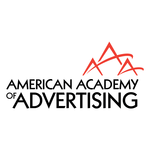Proposal authors of accepted papers can use the tool below (scroll down) to see where they have been placed in the agenda. Note: Special Topics sessions - Only the submitter's name is searchable, not panelists. [If you wish an overview of the conference please click here: Conference Overview Agenda.
Please use this search form to:
- First or Secondary Author: Click on "person," click on your name, and "search." Then use the bottom scroll bar to slide to the right until you see the search button. Scroll down this screen to see the result of the search!
- Search by Date/Time
- Search by Keywords
- Search by Submission Type (Full Paper or Special Topics)
To see the full agenda, leave all drop-downs blank, and simply click on "Search." Please note that there are some options you may select once you have searched. (Please do not be confused about something that looks like "1.1 Digital Advertising" as this is simply a title of a group of sessions.
Contact the AAA Conference Office to accept the session assignment, or to request a change due to a conflict. Call (727) 940-2658 x 2004 if you have questions. Please be sure to reference the session title(s), date(s) and time(s) if you contact us.
4.1c "It’s Time to Make a Change”: Content Analysis of Food and Beverage Advertisements on Nickelodeon
Abstract
Despite the rising U.S child obesity rate, we still observe the prevalence of unhealthy food and beverage advertisements targeting children and adolescents. Previous studies consistently revealed that children are bombarded by a myriad of unhealthy food and beverages while they watch television. Specifically, Nickelodeon, as one of the top-rated children’s television channels, was under criticism for the vast number of advertisements promoting low nutrient foods on its shows. To update Nickelodeon’s food advertising exposure, we conducted a content analysis of 506 food and beverage advertisements aired on the Nickelodeon channel during two time periods. The study found that Nickelodeon did not show significant improvement in promoting healthier foods to child audiences or in limiting less healthy food advertising. Fast foods, soft drinks and confectionery brands dominantly appeared with promotional characters, emotional appeals, and taste claims. The results also showed evidence that health claims were used not only for healthy food (e.g., milk, seeds and nuts) but also for food products in the gray area (e.g., fruit juice, yogurt). Further discussions are needed regarding public policy and regulatory actions.
First & Corresponding Author
Regina Ahn, University of Illinois
Authors in the order to be printed.
Regina Ahn, University of Illinois; Jie (Doreen) Shen,University of Illinois; Xuanjun Gong, University of Illinois; Chen Chen, University of Illinois; Weizi Liu, University of Illinois; Michelle Nelson, University of Illinois; Gail Ferguson, University of Illinois
